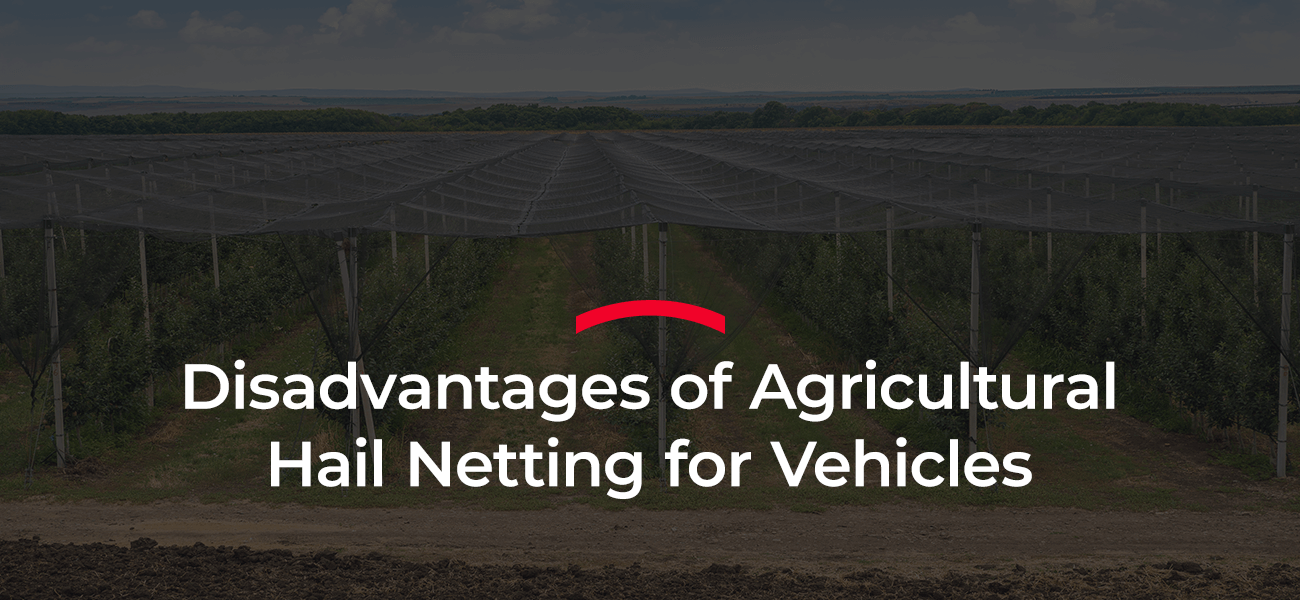When it comes to covering your parking lots and protecting your vehicles, you’re looking for hail protection that will last. Unfortunately, for many automotive manufacturers, dealers, and commercial parking providers, traditional hail protection netting often fails to deliver lasting results and could leave your vehicles vulnerable to catastrophic damage.
Read the full article or jump to a specific section:
- Importance of Agricultural Hail Protection
- What Is Hail Netting?
- Disadvantages of “Ag Netting” for Automotive Applications
- An Alternative Solution — Automotive Hail Protection from VPS
Importance of Agricultural Hail Protection
If you’re looking for the best way to protect your fleet, read on to learn more about the disadvantages of agricultural hail net structures for auto dealers and other automotive applications — and what you can do instead to protect your inventory or fleet.
What Is Hail Netting?
Since the mid-1990’s, automotive hail damage has been on the rise, not only in the Central and Southeast regions of the U.S., but also across large portions of Europe. Auto assembly plants, auto dealerships, airports, and other areas with high-vehicle volumes report multiple cases of lost revenue every year during hail season, but few have sufficient hail protection in place.
Today, many logistic and risk mitigation professionals are turning to agricultural hail netting to combat disruption to their respective supply chains. Too often, these nets are modified products designed specifically for the agricultural industry to protect crops from hail. They are lightweight in design, are deployed when inclement weather is in the forecast, and require regular maintenance. Manufacturers of these products claim they can effectively protect vehicles from the damage caused by hail storms, but these designs fail to provide the durable weather protection you demand.
Disadvantages of “Ag Netting” for Automotive Applications
Modified agricultural hail nets may appear to provide adequate protection from hail, but the lightweight nature of their design often won’t hold up to today’s inclement weather, much less the building codes of your local municipality. Some of the disadvantages of “ag netting” for vehicles include:
- Lifespan: Most ag-based hail net products are not intended to be used as long-term solutions. Very few are designed to support large vehicles fleets over the long term. Hail protection products that aren’t designed, engineered, and built to withstand exposure to the elements over a long period of time will need to be maintained or replaced often, thus becoming a costly and time-consuming effort. When it comes to using these hail nets for cars, consider alternative protection solutions that can last much longer.
- Durability: Lightweight ag netting can rip and tear across the seasons, opening your staged inventories to inclement weather. If you manage large vehicle staging areas, you might not notice failures in this type of netting until it’s too late. If you’re looking to protect your fleet, a sturdier, longer-lasting option is the way to go.
- Cost-effectiveness: Sub-par ag netting products are one of the cheapest solutions for hail protection — at first glance. However, excessive maintenance and a short lifespan quickly make these cheaper products not worth the money you save upfront.
- Compliance: Regions prone to inclement weather outline specific building codes for all types of structures. If these codes aren’t followed, the people or property inside the structure could be severely hurt or damaged. Most ag netting products are not designed to meet local building codes and simply cannot withstand moderate to significant weather events.
